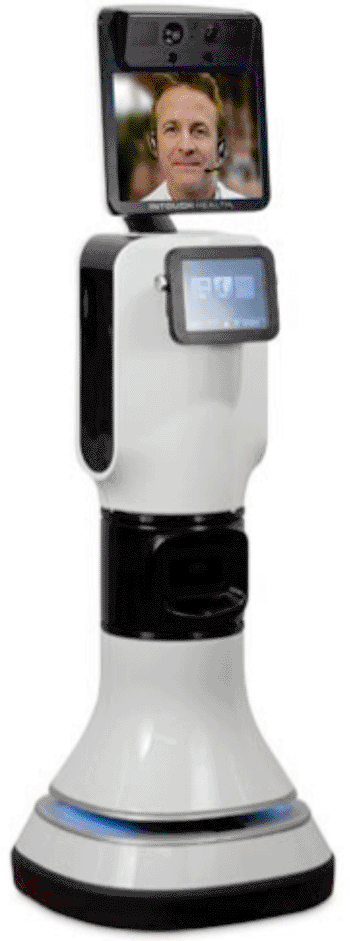Telepresence Robots Expand Access to Medical Specialists
By HospiMedica International staff writers
Posted on 25 Nov 2013
Mobile video-conferencing robots equipped with cameras, microphones, and speakers allow physicians and patients to see and talk to each other.Posted on 25 Nov 2013
The RP line of telemedicine robot is designed for remote doctor-to-patient consultation and active patient monitoring in the preoperative, perioperative, and postsurgical settings. The robots are designed to blend into existing hospital processes, providing state-of-the-art audiovisual capabilities with a high-quality interactive experience. The remote platform offers a full range of clinical capabilities for delivering TeleStroke, TeleICU, TelePediatrics, TeleMental Health, and TeleBurn services, as well as more than 20 additional multispecialty emergency department (ED) and surgical specialties.

Image: The RP-VITA remote presence robot with Auto-Drive (Photo courtesy of InTouch Health).
Among the features of the robots is a user interface accessible via a computer, laptop, or iPad that allows the physician to log on to the device and communicate via a secure ControlStation interface supported by the cloud-based network infrastructure. Immersive 2-way audio-visual communications support remote presence, medical imaging, and patient documentation. Several models also offer optional advanced autonomous navigation and driving capabilities. The RP line of telemedicine robot is a product of InTouch Health (Santa Barbara, CA, USA), and was developed jointly with iRobot (Bedford, MA, USA).
“The need to better leverage medical expertise is a common problem everywhere in the world,” said Yulun Wang, PhD, chairman and CEO of InTouch Health. “Obviously things evolve and take time in order to move from larger places to smaller places, and also the Internet has to be there. Given that that evolution is undoubtedly going to take place, I think that it will happen with this technology as well.”
“During a stroke, the loss of a few minutes can mean the difference between preserving or losing brain function,” said Prof. Paul Vespa, MD, of the department of neurosurgery and neurology at the David Geffen School of Medicine at UCLA (USA). “The new technology enables me to concentrate on caring for my patient without being distracted by the need to set up and manage its technological features.”
Related Links:
InTouch Health
iRobot














